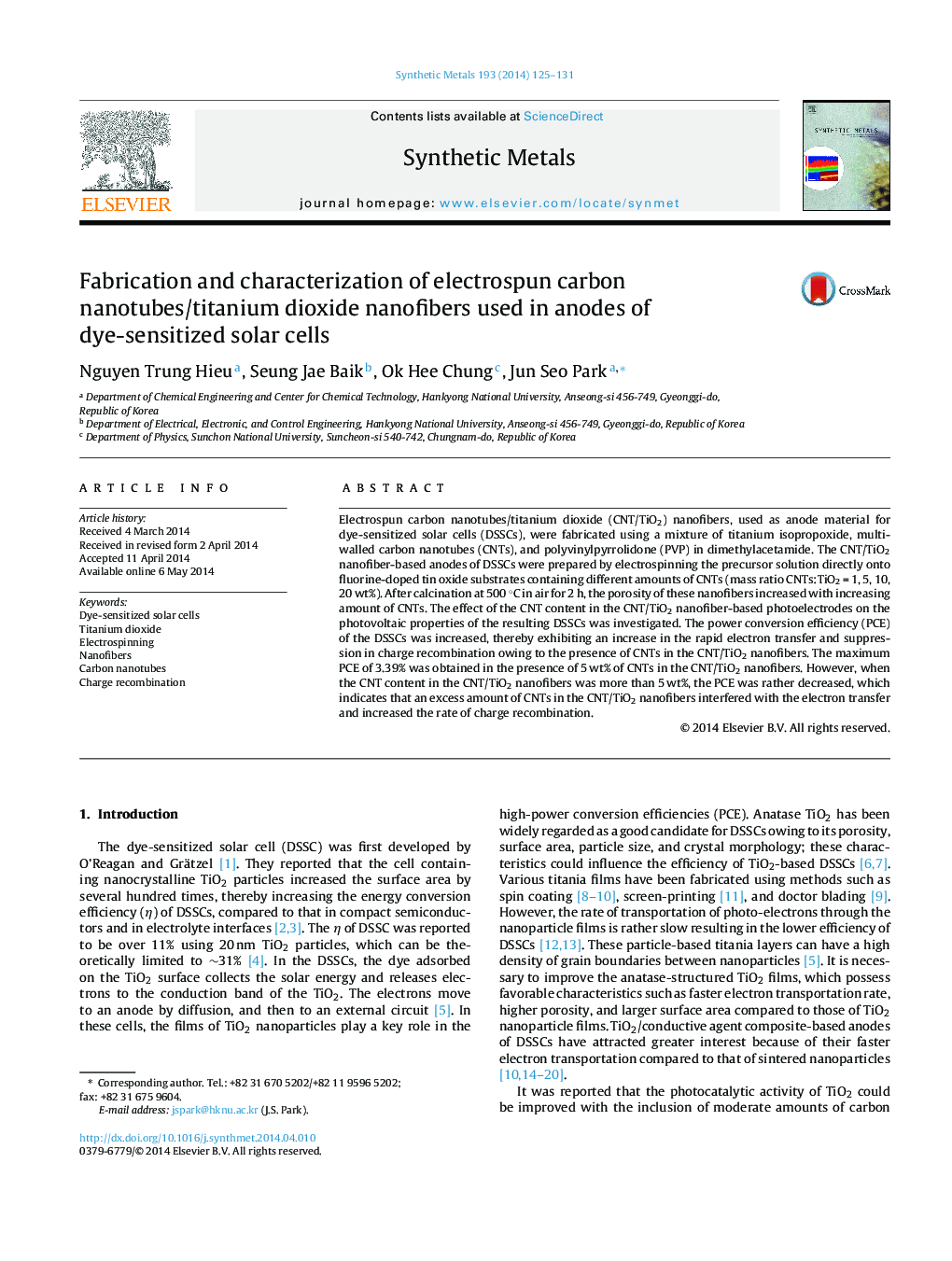| کد مقاله | کد نشریه | سال انتشار | مقاله انگلیسی | نسخه تمام متن |
|---|---|---|---|---|
| 1440988 | 1509384 | 2014 | 7 صفحه PDF | دانلود رایگان |
• CNT/TiP/PVP nanofibers were directly electrospun onto transparent electrode.
• After calcination at 500 °C in air, a layer of CNT/TiO2 nanofibers was formed.
• DSSCs with different amounts of CNTs were characterized by photo J–V curves.
• CNTs facilitated the quick transport of electrons in the TiO2 network.
• However, a higher loading of CNTs resulted in a lower PCE value of DSSC.
Electrospun carbon nanotubes/titanium dioxide (CNT/TiO2) nanofibers, used as anode material for dye-sensitized solar cells (DSSCs), were fabricated using a mixture of titanium isopropoxide, multi-walled carbon nanotubes (CNTs), and polyvinylpyrrolidone (PVP) in dimethylacetamide. The CNT/TiO2 nanofiber-based anodes of DSSCs were prepared by electrospinning the precursor solution directly onto fluorine-doped tin oxide substrates containing different amounts of CNTs (mass ratio CNTs:TiO2 = 1, 5, 10, 20 wt%). After calcination at 500 °C in air for 2 h, the porosity of these nanofibers increased with increasing amount of CNTs. The effect of the CNT content in the CNT/TiO2 nanofiber-based photoelectrodes on the photovoltaic properties of the resulting DSSCs was investigated. The power conversion efficiency (PCE) of the DSSCs was increased, thereby exhibiting an increase in the rapid electron transfer and suppression in charge recombination owing to the presence of CNTs in the CNT/TiO2 nanofibers. The maximum PCE of 3.39% was obtained in the presence of 5 wt% of CNTs in the CNT/TiO2 nanofibers. However, when the CNT content in the CNT/TiO2 nanofibers was more than 5 wt%, the PCE was rather decreased, which indicates that an excess amount of CNTs in the CNT/TiO2 nanofibers interfered with the electron transfer and increased the rate of charge recombination.
Figure optionsDownload as PowerPoint slide
Journal: Synthetic Metals - Volume 193, July 2014, Pages 125–131
